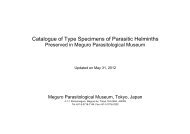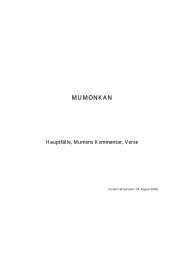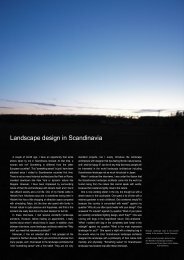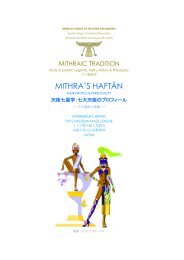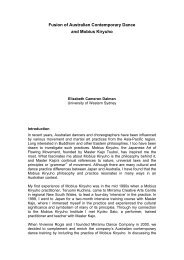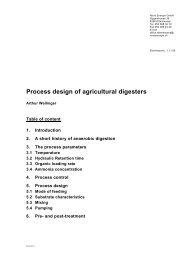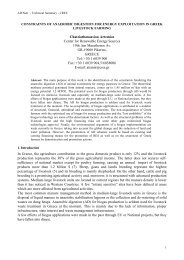III. No-Till Farming Systems - nifty
III. No-Till Farming Systems - nifty
III. No-Till Farming Systems - nifty
Create successful ePaper yourself
Turn your PDF publications into a flip-book with our unique Google optimized e-Paper software.
ets; the effects of the resulting design compromises on biological risk are also<br />
documented.<br />
Because no-tillage is one part of a complex food production system that involves<br />
repeated exploitation of the thin and fragile layer of croppable top soil that covers<br />
only 4% of the world’s surface, other related soil sciences are also integrated into<br />
the book. In particular, the importance of soil carbon is dealt with in detail, both<br />
in relation to how no-tillage minimizes losses of soil carbon during seeding<br />
(compared with conventional tillage) and how it sequesters soil carbon that feeds<br />
soil fauna. In turn, soil fauna have much to do with creating soil structure that is<br />
essential for maximizing crop yields and minimizing soil erosion. Since compaction<br />
from vehicle wheel traffic is almost always detrimental to soil health, the<br />
complementary practice of controlled traffic is examined as it has the capability<br />
to limit wheel compaction to designated traffic areas and leave productive soils<br />
unaffected.<br />
Finally, a book on no-tillage would not be complete without some examples of<br />
economic comparisons, which almost invariably come out in favor of no-tillage<br />
over tillage. A separate chapter is also devoted to the experimental techniques and<br />
procedures used to improve our understanding of the differences between methods<br />
of no-tillage. Some of these techniques are unique since some of the authors<br />
themselves pioneered aspects of agricultural research that had not previously<br />
been examined in detail or under controlled conditions.<br />
The book therefore provides a useful reference for students and scientists alike,<br />
but is also designed to appeal to practitioners. Anyone who has attempted or been<br />
associated with no-tillage in any context should find this book enlightening. In<br />
many cases it will help show why otherwise-unexplained crop failures have occurred<br />
when inappropriate equipment, methods, and/or management practices<br />
have been applied.<br />
Some 300 quoted references attest to the depth of information sourced for this<br />
easy-to-read but information-filled book. A review of this book by T. Francis<br />
Shaxson can be read from the BOOK REVIEWS page of WASWC website at<br />
http://waswc.soil.gd.cn.<br />
Published jointly by FAO (Rome, Italy) and CABI (Wallingford, U.K.), 2006.<br />
ISBN-10: 1-84593-116-5; ISBN-13: 978-1-84593-116-2 (CABI); ISBN: 92-5-<br />
105389-8 (FAO) xiv+326pp. GBP 75, Euro 120, US$150, (with 10% discount by<br />
purchasing online) www.cabi.org/bk_BookDisplay.asp?PID=1970<br />
The Editors: John Baker, CEO, Baker <strong>No</strong>-<strong>Till</strong>age Ltd and President NZ <strong>No</strong>-<br />
<strong>Till</strong>age Association (Inc.), New Zealand (baker@crossslot.com,<br />
www.CrossSlot.com); K.E. Saxton, formerly of USDA, ARS, U.S.A.<br />
507



